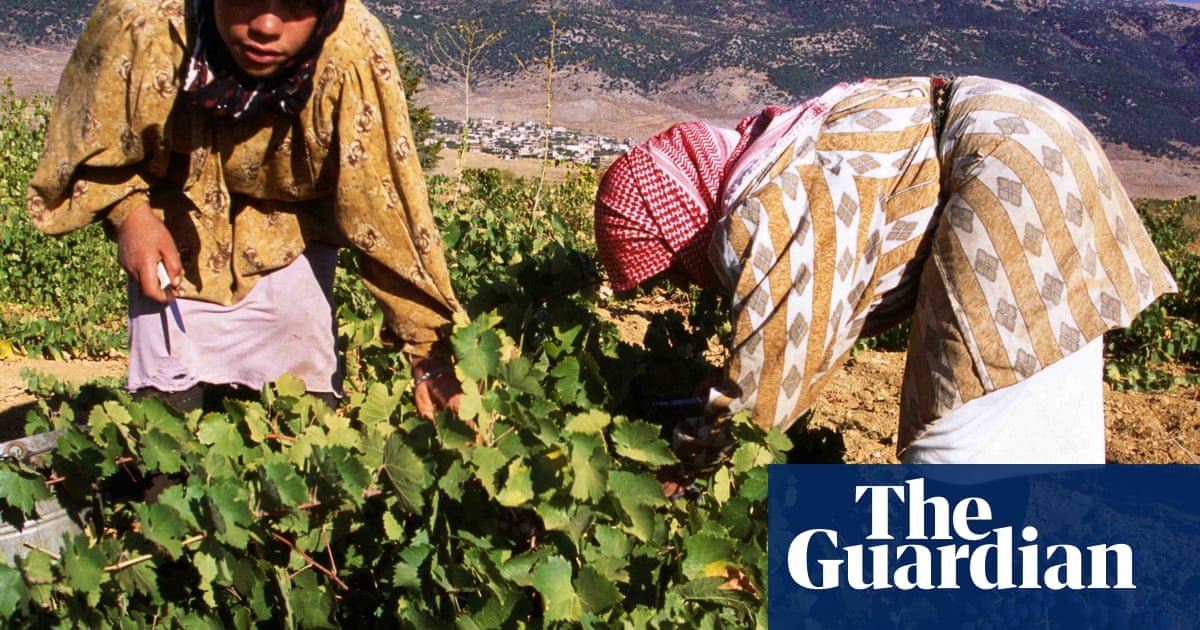Lebanon has one of, if notthemost ancient winemaking traditions in the world, so it stands to reason that we ought to drink more of it. This historic wine industry started way back with the Phoenicians, who spread viticulture throughout the Mediterranean, and then, in 1857, Jesuit monks planted vines from Algeria in the Bekaa valley, in an area that is today one of the country’s most prestigious wine-producing regions.
Today there are some 80 wineries in operation in the Bekaa, most of them with a decided focus on French grapes – cabernet sauvignon, cinsault, merlot, sauvignon blanc and chardonnay all get a lot of love – but native grapes such asobaideh,merwah, jandali and hamdali also feature in the production of wine and arak, a distilled anise spirit.
The best of these wineries are defined by their altitude. Whereas the areas by the coast are flat and hot, and perhaps too much so to produce complex wines, the more mountainous regions of Mount Lebanon, Jezzine, Batroun and the Bekaa valley are able to yield wines of good quality. The higher altitude allows for a distinct diurnal temperature range – that is, the difference between day and night temperatures in the vineyard – and a large range can allow grapes to develop properly (heat in the day to ripen the grapes and coolness at night to train acidity).
The outlier for these modern, prestige wines is, by far, the renownedChâteau Musar, which may well be the first and only Lebanese wine many of us have tried. Inspired by his travels to Bordeaux, Gaston Hochar first planted vines on what became the Musar estate back in 1930, and during the Lebanese civil war, his eldest son Serge switched the winery’s focus to exports, especially to the UK, a move credited for its prominence in the west today. That’s why you can now find Musar at many prestige importers, as well as a couple of supermarkets.
Musar’s is a story defined by a Lebanon at war, which continues to this day – last year, the eastern Bekaa valley was one of the areas most severely affected by Israeli air strikes – but this is not something that will define Lebanese wine, insistsHenna Bakshi, an award-winning wine journalist who has reported extensively on war-zone wines: “No region will ever want to be known for war,” she says. “We must understand that – this is historical context. The quality of wine coming from the region, despite the impossible, is still absolutely incredible. I’d suggest blind tasting top Lebanese producers to understand the quality of their winewithoutthe context.”
Local winemakers are finding new ways to overcome adversity, too: “During airstrikes last year, Eddie Chami ofMersel Winelost all power and electricity,” Bakshi says, “and he was making wine with a headlamp; he [even]documented it on video, and on one of his Instagram stories you could hear the drones in the background.” For more on how Lebanese winemakers are being affected by war, I’d very much recommendBakshi’s account for Wine Enthusiast,which details how, amid all the unpredictability, life goes on.
Château Oumsiyat Mijana£9.75 Waitrose, 13%. Intense, but not overpowering. Spicy and full, too.
Château Musar Jeune Rosé 2022£15.45 VINVM, 11.5%. Cinsault, syrah and tempranillo. Just as good with food as without.
Château Musar Jeune Red 2021£16.99 Virgin Wines, 13%. Approachably priced red Musar, unoaked and brimming with blue fruit.
Massaya White 2022£19 The Wine Society, 13%. A textured blend of sauvignon blanc, obeidi, clairette, rolle and chardonnay.
